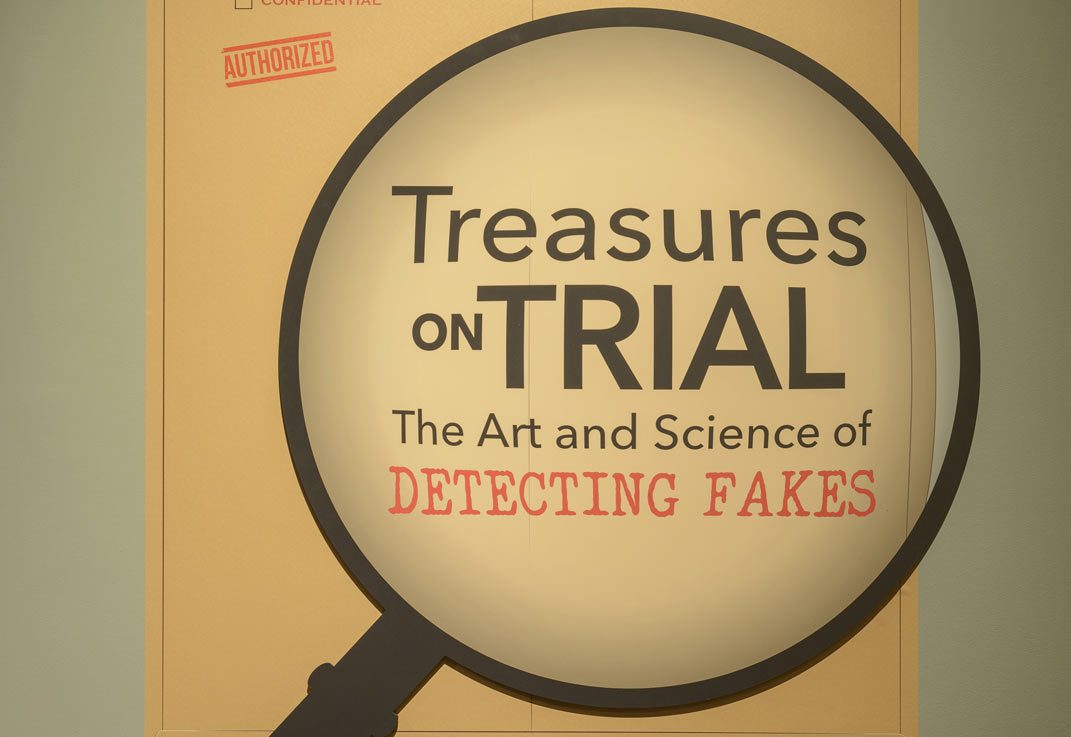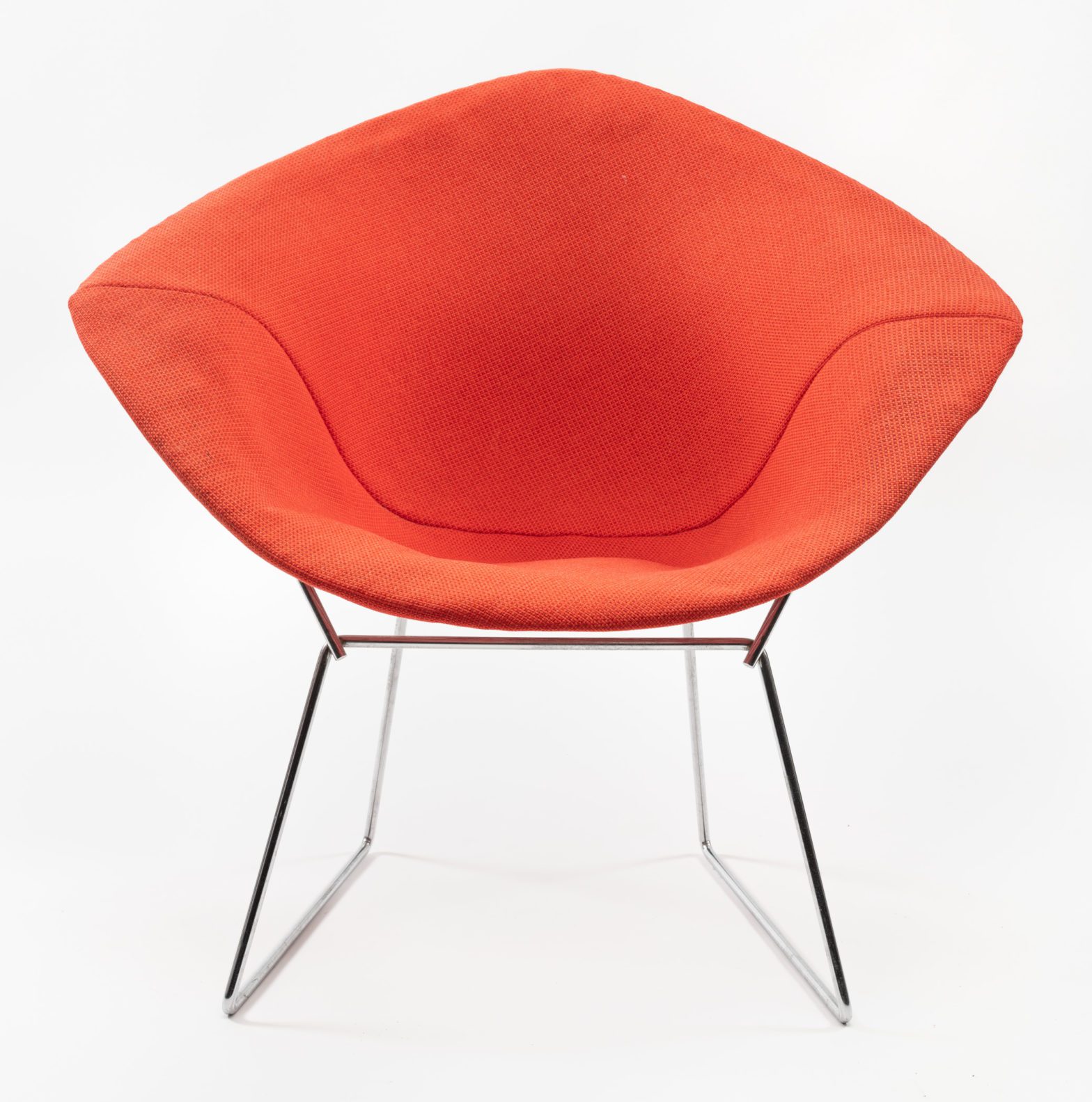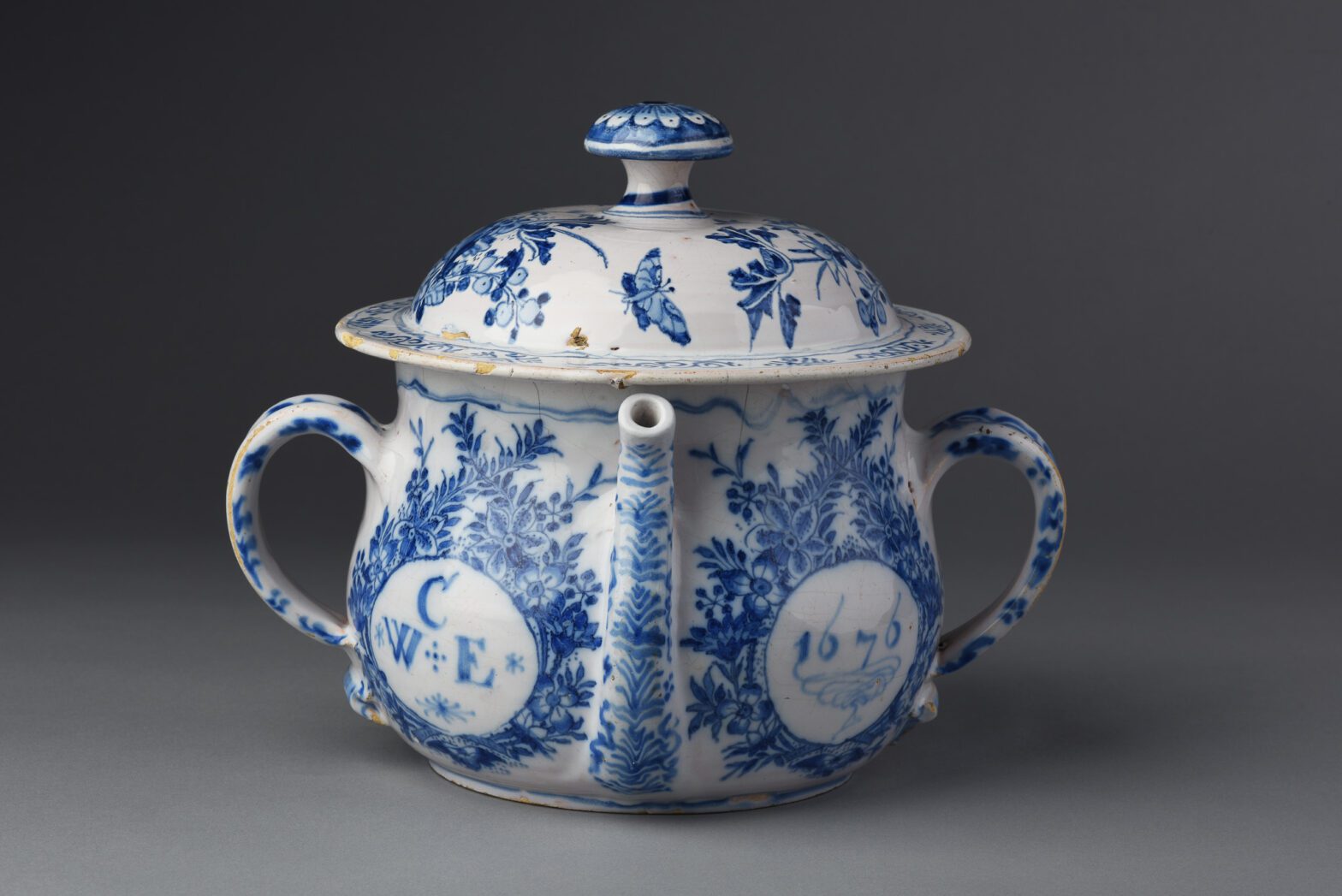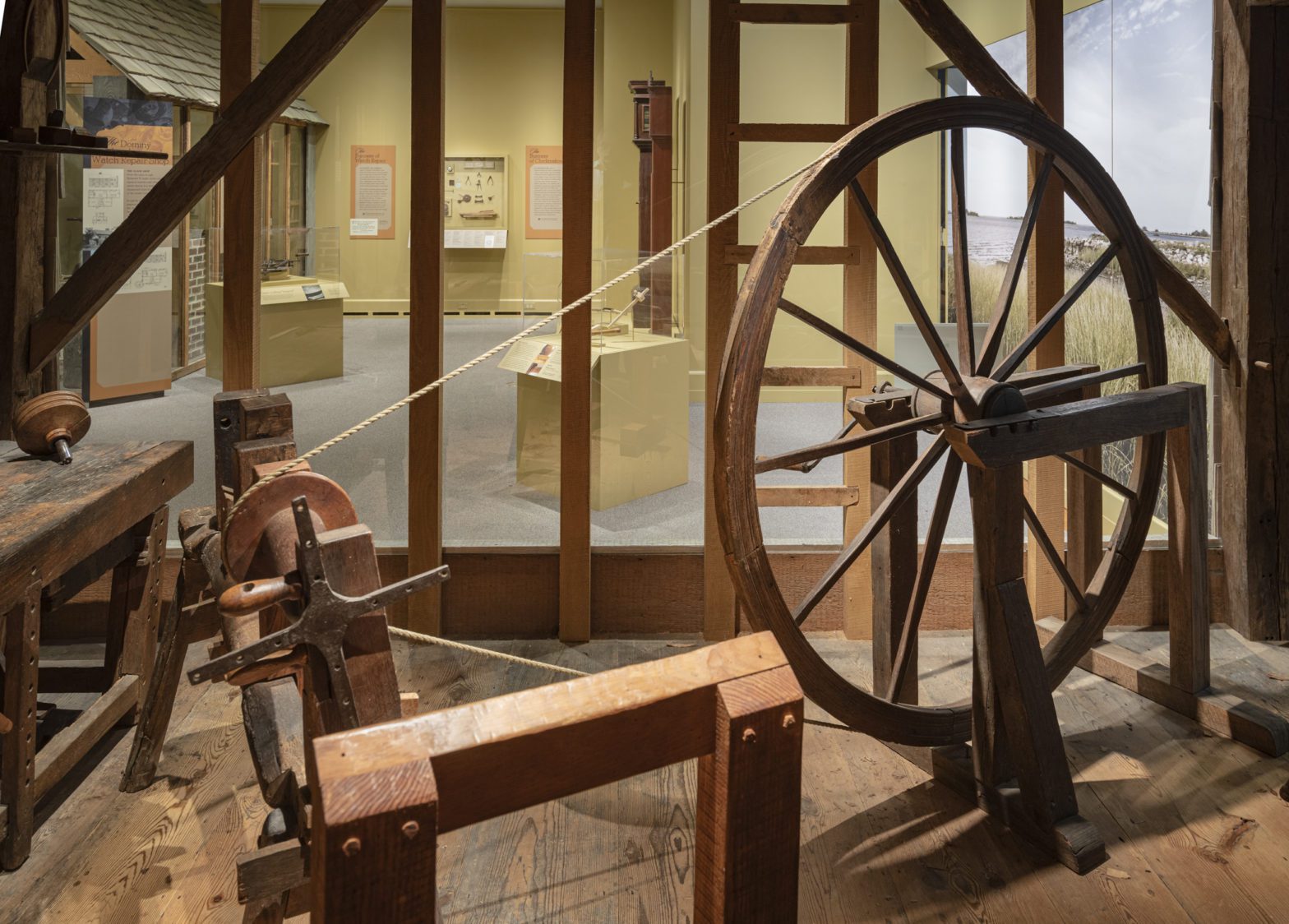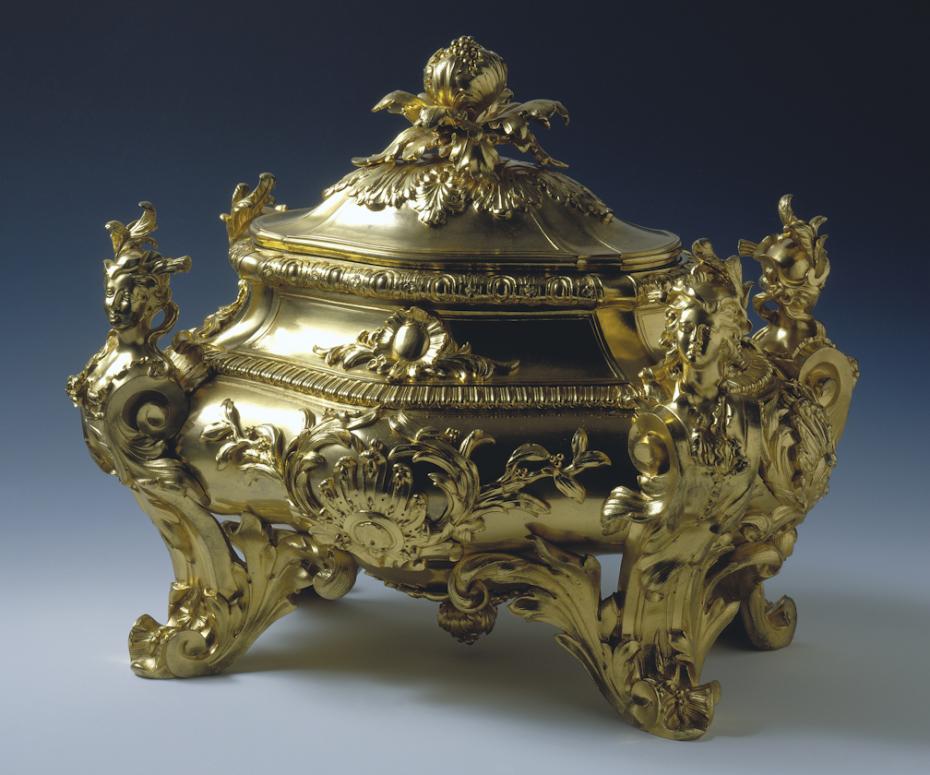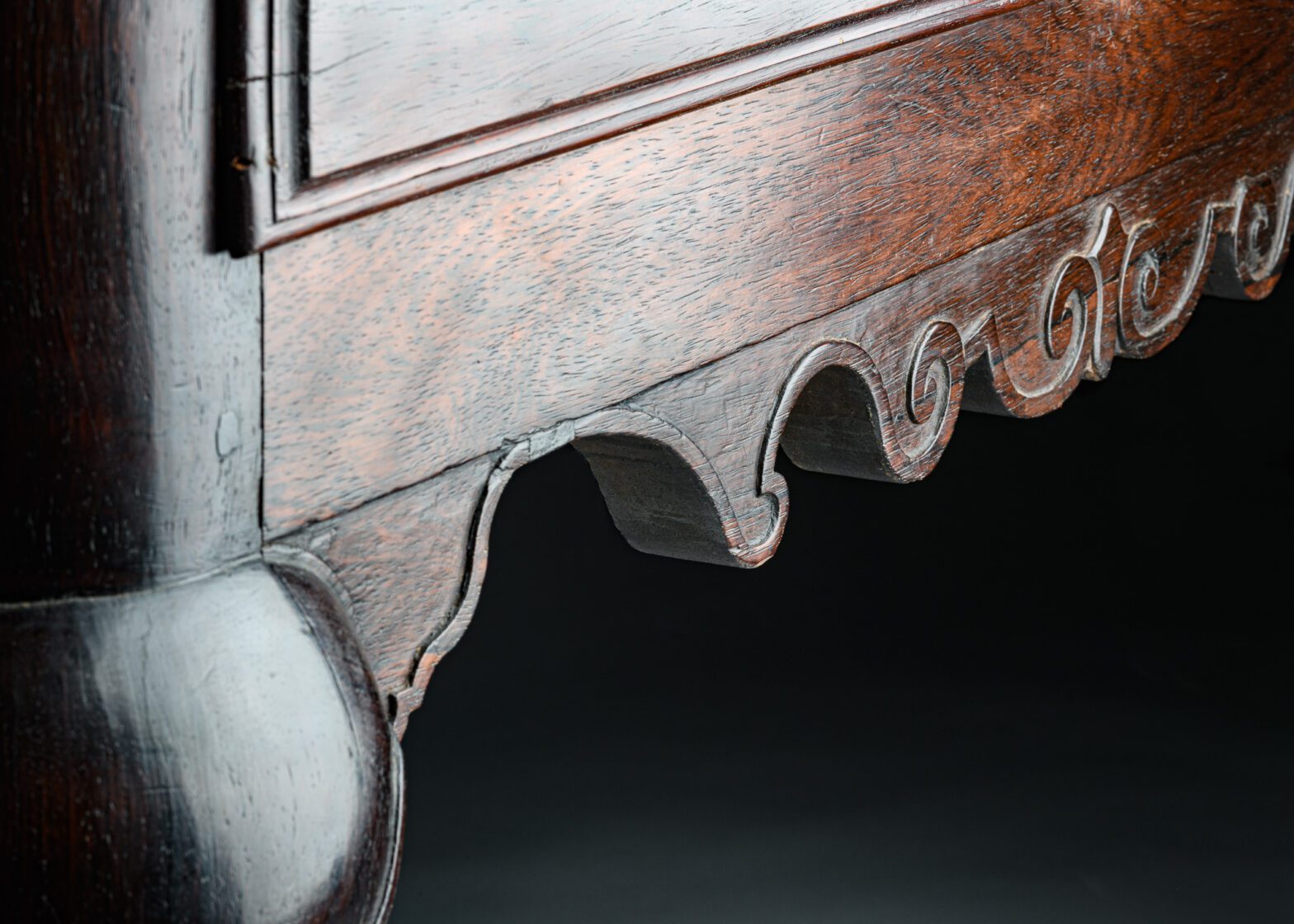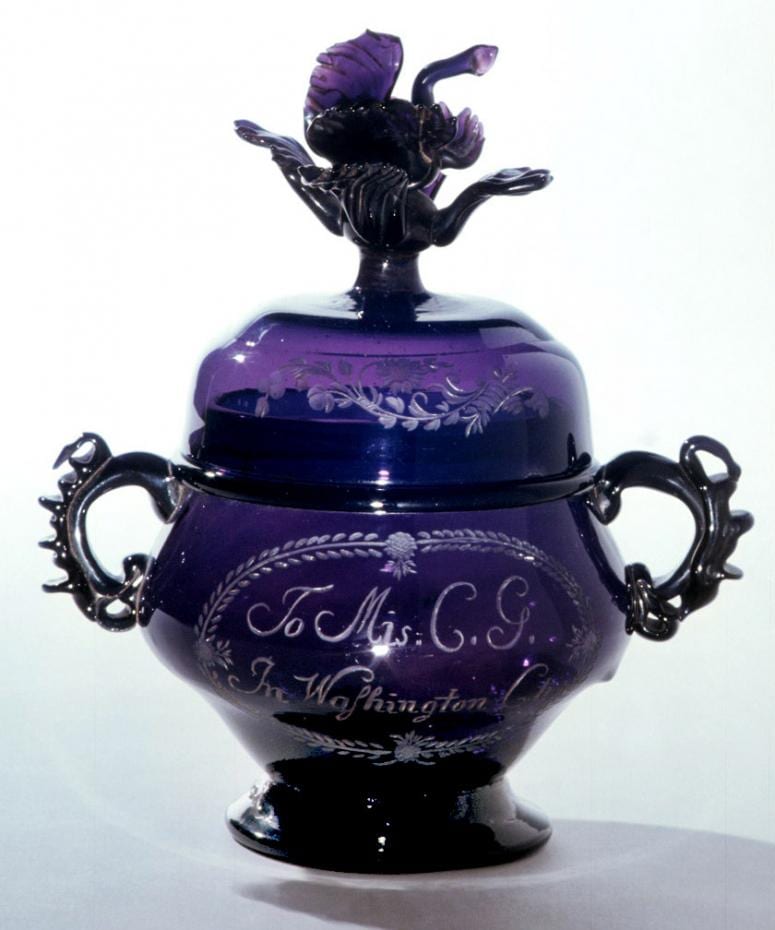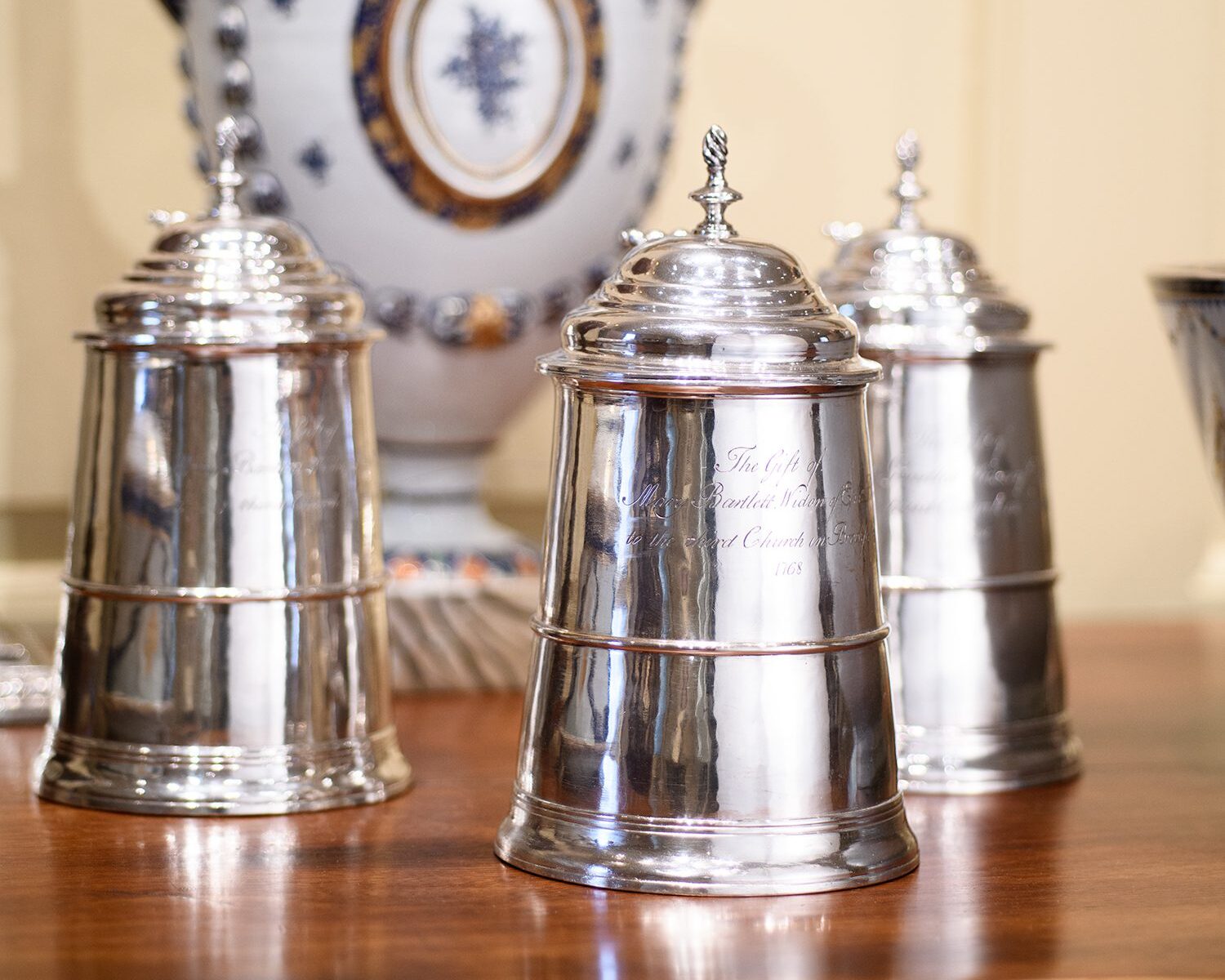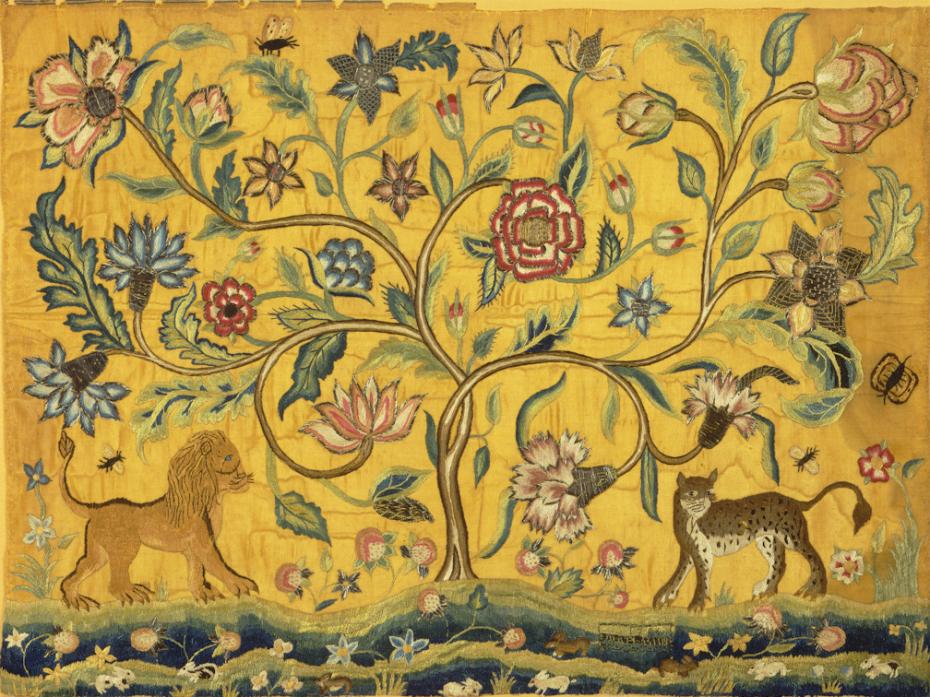Treasures on Trial: The Art and Science of Detecting Fakes reveals the intriguing tales of more than 40 forgeries and counterfeit objects of all types. This exhibition poses the questions: Do we see what we think we see? Is it real or fake?
Unity by Design
Winterthur has a secret. Scattered throughout our lounges, libraries, laboratories, and offices is a collection of midcentury modern furniture that has as much of a story to tell about American design as the furniture that populates the rooms of the museum. Represented in this group of furnishings is an incredible spectrum of Knoll and Herman Miller objects purchased to furnish museum spaces as early as 1957. Unity by Design: Midcentury Modernism at Winterthur explores the juxtaposition of midcentury modernism at an institution rooted in traditional Americana. This overview of the midcentury modern furniture at Winterthur helps us understand it as an extension of Winterthur’s collection and mission and allows us to explore what it means when traditional meets modern.
Ceramics
Winterthur’s ceramics collection includes about 19,000 objects of types made in or imported into America from the 1600s through the mid-1800s. The earthenware, stoneware, and porcelain in the collection represent a broad range of manufacturing and design types and have special strengths among American, English, and Chinese wares.
The American earthenware in the collection includes approximately 300 objects, about 100 of which are slipware, or slip-decorated earthenware. This important group features iconic work by sgraffito (incised) slipware potters such as Pennsylvania’s George Hubener, John Neis, and Conrad Mumbouer. Other highlights are pieces by Virginia’s Samuel Bell and Sons and Anthony Wise Baecher. Winterthur’s respected collection of more than 150 pieces of American stoneware features work by important potters: the African-American potter, Dave, of South Carolina; Maryland’s William Morgan; the Remmey family of Pennsylvania; the Croliuses of New York City; and Warne and Letts of New Jersey.
Additional highlights of the ceramics collection include nearly 5,000 Chinese export porcelain objects, many of them produced for the American market, as well as special-order wares once owned by famous historical figures. George Washington’s Order of Cincinnati dinner service is particularly well-represented by more than 70 pieces. Other pieces are from services once owned by New York’s Governor DeWitt Clinton and President Ulysses S. Grant, among many others. An astonishingly wide array of American market and other table-, tea-, and ornamental ware helps illustrate the broad range of shapes available to the general consumer.
European ceramics at Winterthur range from early Dutch delftware (tin-glazed earthenware) to elegant Meissen (German) porcelain, but best represented are the wares of England. English earthenware, stoneware, and, to a lesser extent, porcelain are found extensively among American archaeological material and, until well into the 1800s, joined Chinese porcelain as major imports to this continent.
Books about Winterthur Ceramics
Fennimore, Donald L. and Patricia A. Halfpenny. The Campbell Collection of Soup Tureens at Winterthur. Winterthur, Del.: Henry Francis du Pont Winterthur Museum, 2000.
Fuchs, Ronald W. and David S. Howard. Made in China: Export Porcelain from the Leo and Doris Hodroff Collection at Winterthur. Winterthur, Del.: Henry Francis du Pont Winterthur Museum, 2005.
Palmer, Arlene. A Winterthur Guide to Chinese Export Porcelain. Winterthur, Del.: Henry Francis du Pont Winterthur Museum, 1976.
Teitelman, S. Robert, Patricia A. Halfpenny, Ronald W. Fuchs with essays by Wendell D. Garrett and Robin Emmerson. Success to America: Creamware for the American Market Featuring the S. Robert Teitelman Collection at Winterthur. Antique Collectors’ Club, Woodbridge, Suffolk, England, 2010.
With Hammer in Hand: A Story of American Craft
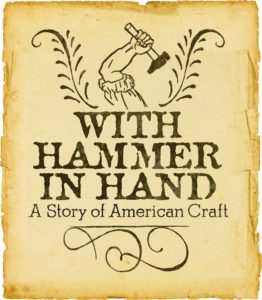
Discover the story of three generations of the Dominy family, skilled craftsmen who worked and traded in the racially diverse community of East Hampton, Long Island, in the 18th and early 19th centuries.
The gallery includes the nearly complete contents of their woodworking, clock-making, and watch repair shops—including lathes, workbenches, and more than 1,000 hand-tools, as well as examples of the furniture and tall clocks they made, and extensive shop records and family papers. Together, they tell a more complete story about the practices and roles of skilled craftsmen in pre-industrial America than any other single grouping of artifacts and documents that have survived from this period.
Learn more about the Dominy Collections.
Campbell Collection of Soup Tureens
Artfully crafted in fascinating forms, the Campbell Collection of Soup Tureens features sculpted metals, precious porcelains, and elegant earthenwares among the materials found in this wide range of tureens and soup-related objects made in Europe, Asia, and America. The dates range from 1720 to modern times.
The genesis of the Campbell Collection dates to 1966, when John T. Dorrance Jr., chairman of the Campbell Soup Company, and W. B. Murphy, the company president, decided to begin collecting these splendid pieces. The collection came to Winterthur and the gallery opened in 1997.
Come see for yourself why guests from around the world have enjoyed the Campbell Collection of Soup Tureens at Winterthur. Included with general admission.
Featured on CBS Sunday Morning
In November 2020, Winterthur was thrilled to walk the CBS Sunday Morning team through this stunning collection.
Featured on The 302
In April 2022, Winterthur shared the exciting history of the collection with The 302.
Furniture
Winterthur’s American furniture collection is the largest and arguably the finest in the country. With a wide range of regional and stylistic forms, the collection of more than 9,000 objects spans the mid-1600s to the 1870s.
Henry Francis du Pont began collecting furniture in the early 1920s with Windsor chairs, painted chests, and simple pine and maple pieces. Du Pont developed a passion for high-style Philadelphia rococo furniture, setting a record in 1929 when he paid $44,000 for the Turner-Van Pelt family high chest. He eventually acquired some of the choicest Philadelphia furniture dating from the 1730s to the 1770s.
Du Pont displayed his collection in rooms that he and his family lived and entertained in from 1931 until 1951. Much of this furniture resided in Winterthur’s principal entertaining spaces: the Port Royal Entrance Hall and Parlor, the Marlboro Room, and the Blackwell, Readbourne, and Chinese Parlors. Furniture owned by wealthy colonials such as the Dickinson, Gratz, Cadwalader, and Logan families are prized among the objects in these spaces.
Other furniture collection highlights include representative pieces of the finest New England furniture, especially from Newport, Boston, Salem, and Portsmouth. Works by well-known urban cabinetmakers such as Samuel McIntire, Thomas Seymour, and Thomas Affleck join examples from less urban makers like the Dunlaps of New Hampshire and Christian Seltzer of Lebanon County, Pennsylvania.
Federal and empire furniture from the early 1790s to the 1830s also has an important place in the collection. Since du Pont’s death, the empire furniture has been augmented with significant objects such as an exceptional Philadelphia sideboard attributed to Joseph Barry and once owned by Andy Warhol, an important dolphin-supported pier table, and more recently, a pair of Philadelphia armchairs with dolphin arm supports.
Winterthur’s location in northern Delaware gave du Pont easy access to the many dealers in southeastern Pennsylvania, so his collection developed a great strength in objects produced by the region’s ethnically and religiously diverse population.
Books about Winterthur Furniture
Downs, Joseph. American Furniture: Queen Anne and Chippendale Periods in the Henry Francis du Pont Winterthur Museum. New York: MacMillan Company, 1952.
Richards, Nancy E. and Nancy Goyne Evans. New England Furniture at Winterthur: Queen Anne and Chippendale Periods. Winterthur, Del.: Henry Francis du Pont Winterthur Museum, 1997.
Hummel, Charles F. A Winterthur Guide to Chippendale Furniture: Middle Atlantic and Southern Colonies. New York: Crown Publishers, Inc., 1976.
Montgomery, Charles F. American Furniture: The Federal Period in the Henry Francis du Pont Winterthur Museum. New York: Viking Press, Inc., 1966.
Top Image: Cabinet. Attributed to the Symonds Shop, Salem, Massachusetts; dated 1676. Red oak, red cedar, soft maple. Height: 17 ¼” (43.8cm). 1958.526
Paintings & Prints
From the outset of his collecting in the 1920s, Henry Francis du Pont recognized the importance of portraits, paintings, prints, and maps to the room settings he was creating at Winterthur. In December 1929, he wrote to dealer Hannah Mae Horner, “I shall be interested in hearing of any American portraits of only very good looking people, or of people who are important historically.” Until 1951 when Winterthur opened as a museum, H. F. du Pont selected each painting with a critical eye to its color, texture, style, and geographical and historical contexts.
Over 450 paintings, most of them by American artists, are featured at Winterthur. Among his early purchases are some of the most important paintings in the collection. In 1930, du Pont purchased important southern works including Henry Benbridge’s double portrait of Captain and Mrs. John Purves and James Earl’s elegant Rebecca Pritchard Mills (Mrs. William Mills) and Her Daughter Eliza Shrewsbury. Benjamin West’s unfinished American Commissioners of the Preliminary Peace Negotiations with Great Britain, dating 1783–1784, was acquired from the J.P. Morgan collection in 1948. After Winterthur became a museum, H. F. du Pont turned to professional staff for advice and consultation. In 1961 he purchased John Trumbull’s iconic Washington at Verplanck’s Point, a work that had hung at Mount Vernon and was a favorite likeness of Martha Washington’s. Winterthur’s American paintings collection has continued to grow and diversify over the years and represents a carefully selected survey of early American portraiture and genre painting.
Winterthur’s collection of more than 4,000 prints and maps is comprised of both American and foreign examples. By the 1930s, du Pont was acquiring significant prints relating to colonial and Federal era America. After 1951, assisted by Winterthur curators, the collection continued to expand. It now includes works by notable American engravers Nathaniel Hurd, Paul Revere, Peter Pelham, and Amos Doolittle, and is particularly rich in images known to have been available to American consumers prior to 1840. Among the Museum’s 1,600 works on paper is an important collection of Pennsylvania-German fraktur.
Books on Winterthur Paintings and Prints
Fowble, E. McSherry. To Please Every Taste: Eighteenth-Century Prints from the Winterthur Museum. Alexandria, Va.: Art Services International, 1991.
Fowble, E. McSherry. Two Centuries of Prints in America, 1680-1880: A Selective Catalogue of the Winterthur Museum Collection. Charlottesville: University Press of Virginia, 1987.
Richardson, Edgar P. American Paintings and Related Pictures in the Henry Francis du Pont Winterthur Museum. Charlottesville: University Press of Virginia, 1986.
Top image: “American Commissioners of the Preliminary Peace Negotiations with Great Britain.” By Benjamin West, London, England; 1783 (begun). Oil on canvas. (Unframed) Height: 28 ½” (72.3 cm); Width: 36 ¼” (92.7 cm). 1957.856
Glass
Henry Francis du Pont began collecting American glass early in his career, and by 1924 his private collection included more than 70 pieces. As well as selecting objects for their color and design, du Pont strove to acquire types of glass known, from historical records and archaeological evidence, to have been in use in early America. Winterthur continues this practice, and today, the collection consists of about 4,000 glass objects.
The work of important early American manufacturers is unusually well-represented and features glass by John Frederick Amelung (New Bremen, Maryland), Caspar Wistar (Wistarburgh, New Jersey), and Henry Williem Steigel (Manheim, Pennsylvania). Among glassware that was produced on a larger scale and would have been more broadly available are Midwestern and New England types. Up-scale items among these range from wineglasses and decanters to flower and celery vases, milk jugs, and sugar bowls. More everyday forms, including milk pans and an impressive group of historical-subject pocket flasks, are also included.
English and Continental glassware fill out the collection and provide a broader sense of what was available to American consumers from the late 1600s through the early 1800s. Such objects comprised most of the elegant table glassware found in wealthy and middle-class American homes. Most of Winterthur’s glassware, displayed in the house, is available for viewing during tours.
Books about Winterthur Glass
Palmer, Arlene. Glass in Early America: Selections from the Henry Francis du Pont Winterthur Museum. Winterthur, Del.: Henry Francis du Pont Winterthur Museum, 1993.
Top Image: Sugar bowl. Made by John Frederick Amelung, New Bremen Glassmanufactory, Frederick, Maryland; about 1790. Nonlead glass. Height: 8” (20.4 cm). 1959.3011
Metalwork
Metalsmiths who settled in colonial America and trained successive generations of craftsmen left a legacy of metalwork important to all aspects of life. Winterthur’s impressive collection of American-made and imported metalwork encompasses more than 21,000 objects of gold, silver, silverplate, iron, pewter, copper, and alloys of copper such as brass, bronze, and paktong. Collection strengths include domestic and ecclesiastical pewter collected chiefly by museum founder Henry Francis du Pont and the museum’s first director, Charles Montgomery. Other important groups include wrought iron hardware as well as ornamental and useful implements; lighting and lamps, many incorporating François Pierre Ami Argand’s design; Kentucky rifles; and colonial American silver.
The silver collection includes about 9,000 examples of maker’s marks on flat silver such as spoons and sugar tongs. Donated by Mr. and Mrs. Stanley B. Ineson, Mr. and Mrs. Alfred E. Bissell, and Richard Tousey, these items provide crucial information for research. Areas of focus for new acquisitions and research are all types of metalwork marked by a craftsman and objects with a known history of ownership in the United States.
Books about Winterthur Metalwork
Belden, Louise Conway. Marks of American Silversmiths in the Ineson-Bissell Collection.Winterthur, Del.: Henry Francis du Pont Winterthur Museum, 1980.
Fales, Martha Gandy. American Silver in the Henry Francis du Pont Winterthur Museum. Winterthur, Del.: Henry Francis du Pont Winterthur Museum, 1958.
Fennimore, Donald L. and Patricia A. Halfpenny. The Campbell Collection of Soup Tureens at Winterthur. Winterthur, Del.: Henry Francis du Pont Winterthur Museum, 2000.
Fennimore, Donald L. Flights of Fancy: American Silver Bird-Decorated Spoons. Winterthur, Del.: Henry Francis du Pont Winterthur Museum, 2000.
Fennimore, Donald L. Metalwork in Early America: Copper and Its Alloys from the Winterthur Collection. Winterthur, Del.: Henry Francis du Pont Winterthur Museum, 1996.
Fennimore, Donald L. Iron at Winterthur. Winterthur, Del.: Henry Francis du Pont Winterthur Museum, 2004.
Quimby, Ian M. G. American Silver at Winterthur. Winterthur, Del.: Henry Francis du Pont Winterthur Museum, 1995.
Top Image: Tankards (set of six). Made by Paul Revere, Jr., Boston, Massachusetts; 1772. Silver. Average height: 8 3/8” (21 cm). 1957.859.1-.6
Textiles & Needlework
Henry Francis du Pont loved textiles for their colors, patterns, and textures. From quilts to gowns, samplers to bed hangings, Winterthur’s collection includes some of the finest textiles made or used in America. Since his death in 1969, the collection has continued to grow, and now includes about 20,000 objects.
Winterthur’s extensive collection of American samplers and needlework pictures, many of which are on display in the house and the Galleries, includes one of the earliest samplers known to have been worked in America, Sarah Stone’s band sampler, dated 1678; a beautiful Philadelphia silkwork picture worked by Mary King in 1754; and a unique Berlin woolwork picture embroidered by Olevia Rebecca Parker in 1852 at the Lombard Street School, a public school in Philadelphia that educated children from the African-American community.
Quilts and other bedcovers are another strength of the textiles collection and feature counterpanes, embroidered blankets, and both Jacquard and float-weave coverlets. Highlights include Mary Foot’s 1778 embroidered bed rug from southeastern Connecticut and Sophia Myers Pearce’s chintz appliqué quilt, made in Baltimore about 1840.
Winterthur’s collection of printed cottons and linens is among the best in the world. Among its rare objects is one of only three counterpanes printed by John Hewson, a Philadelphia printer active in the late 18th and early 19th centuries. Also featured are numerous examples of indigo-resist printed cottons, which were fashionable in the mid-18th century and remain so today, and a set of bed hangings plate-printed with portraits of both George Washington and Benjamin Franklin in the 1780s.
The furnishing textiles used in Winterthur’s rooms have been a source of inspiration to interior designers since the 1930s. Some are significant for the historic fabrics from which they are made, including outstanding English, French, and Indian printed cottons as well as French silks, such as the magnificent curtains made from a silk designed in the 1760s by Philippe de Lasalle (1723–1804), one of the most successful silk designers of the 18th century. Others are exceptional examples of traditional interior design from the early 20th century, many of which were made by the influential firm of Ernest Lo Nano.
For more on Winterthur’s collection of textiles and needlework, please see the quilts database and the virtual catalogue for the past exhibition Who’s Your Daddy? Families in Early American Needlework.
Books about Winterthur Textiles and Needlework
Eaton, Linda. Quilts in a Material World: Selections from the Winterthur Collection. New York: Harry N. Abrams, 2007.
Montgomery, Florence M. Printed Textiles: English and American Cottons and Linens, 1700–1850. New York: Viking Press, 1970.
Montgomery, Florence M. Textiles in America, 1650–1870: A dictionary based on original documents, prints and paintings, commercial records, American merchants’ papers, shopkeepers’ advertisements, and pattern books with original swatches of cloth. New York: W. W. Norton & Co., 2007.
Swan, Susan Burrows. A Winterthur Guide to American Needlework. Winterthur, Del.: Henry Francis du Pont Winterthur Museum, 1976.
Swan, Susan Burrows. Plain & Fancy: American Women and Their Needlework, 1650–1850. Austin, Tx.: Curious Works Press, 1995.
Top Image: Needlework picture. Worked by Mary King, Philadelphia, Pennsylvania; 1754. Silk on silk. Height: 18 ¼” (46.36 cm) Width: 24 1/8” (61.28 cm). 1966.978
